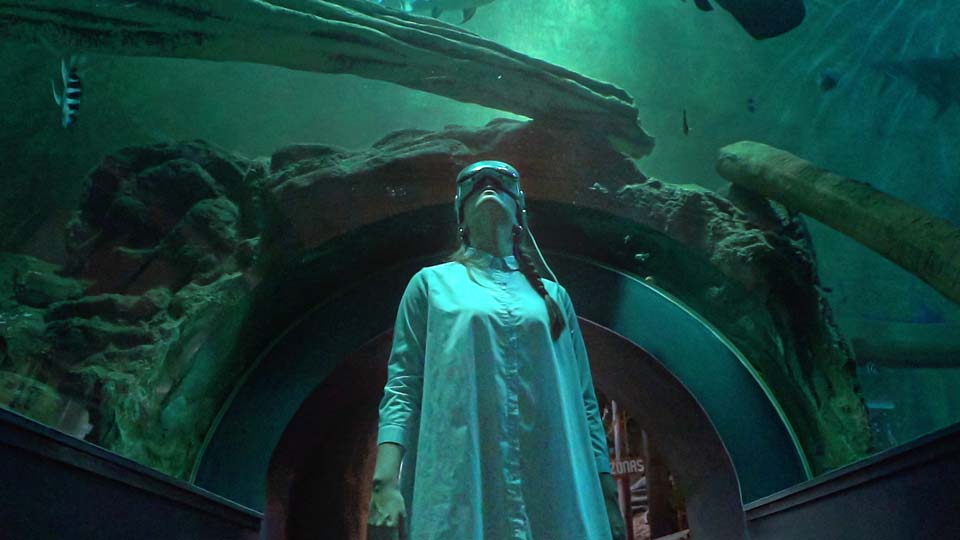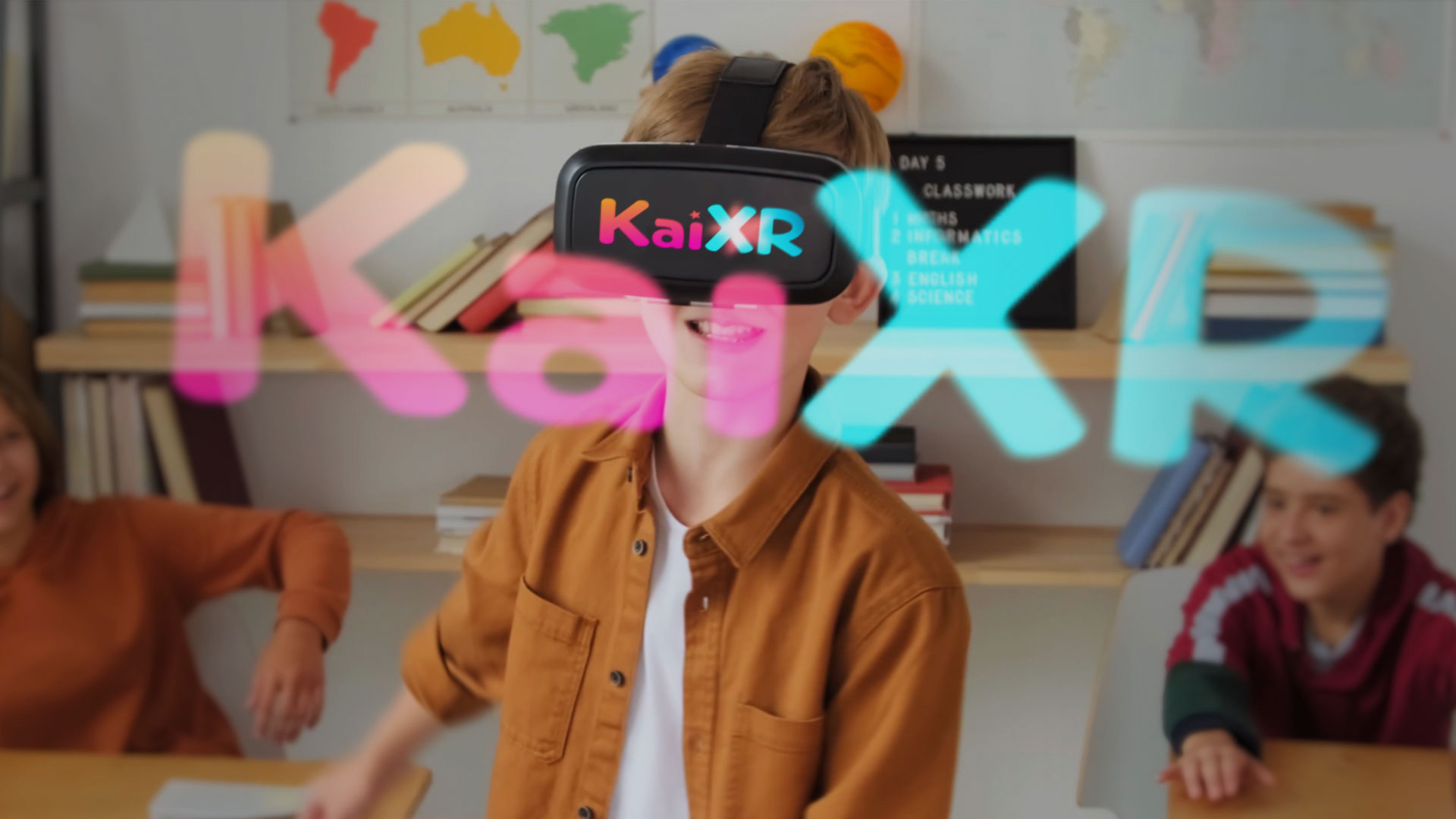What is Spatial Computing and its importance today?
What is Spatial Computing and its importance today?
The real world and the virtual world have never been more interconnected: the real world and the virtual world have never been more interconnected. space computing is already a realityforever changing our perception of Extended Reality and immersive technologies.
Spatial Computing is not new. Everyday examples such as GPS, virtual assistants, and mobile computing experiences are Augmented Reality and Virtual Realityare already proposals developed under spatial informatics, integrating the physical and digital domains.
However, we are currently witnessing the development of its full potential. Both at the hardware level, with new headsets such as the Apple Vision Pro, and at the software level, with more sophisticated 3D processing, design and development systems, with better graphics and that, in real time, are capable of redefining our interaction with the real and virtual world.
What is Spatial Computing?
When talking about spatial computing o Spatial Computing it is important to know what this technological term consists of.
The concept of spatial computing refers to advanced data processing that merges the physical and digital. Allowing - and this is the radical change that Spatial Computing represents - to more natural interactions with technological devicesthrough gestures, eye movements and voice commands. Transforming human-machine interaction with more intuitive, three-dimensional user experiences. Such as, at the tourist leveltouring a museum or aquarium and being able to dive among the fish, petting elephants or teleporting to an erupting volcano like in the last Spatial Computing experience by Imascono for the Apple Vision Pro.
This technology captures and processes data from the physical and digital world to represent them in immersive scenarios. Revolutionizing the way we interact with computers. Now, thanks to the latest advances in Mixed Reality and 3D development, it is possible that this interaction goes beyond the screens, being able to immerse ourselves in these immersive scenarios through Virtual Reality/Mixed Reality glasses.
You may be interested in→ Mixed Reality: Definition, characteristics and examples.
For this purpose, spatial computing relies on a series of information technologies and systems The latest generation of technology allows us to recognize space, create immersive environments and position three-dimensional elements on reality:
- Computer vision (computer vision): ability to understand images as we humans see them (descriptions of objects) instead of reading pixels.
- Sensor fusionFusion of different sensors, such as cameras or geopositioning systems.
- Spatial mapping (spatial mapping): the ability to generate a three-dimensional map of a space using sensor data.
- Machine Learning (machine learning): the system itself collects and analyzes data from the space to find patterns and automate processes.
- Edge computingData processing is performed as close as possible to where the data is being generated, i.e. using the cloud system closest to the user. This makes this processing in real time and more agile than using the traditional system of servers and/or cloud servers.
Spatial Computing Applications
This revolution in interaction with machines and computers represents a major shift in the development of immersive experiences for a multitude of technologies and industries. Spatial computing makes it possible to go beyond primitive interfaces, immersing users in the Web 3.0the three-dimensional experiences e more intuitive and natural interactions.
The following is a review of the main applications:
Extended Reality
Spatial Computing makes it possible to make the Extended Reality go one step further in the immersion offered to users, by being able to interacting with three-dimensional objects through voice and even eye tracking.
This interaction makes it possible to leave controls and screens aside. Spatial Computing technology makes Mixed Reality a reality. You can visit interacting with the digital elements as if they were realwithout limitations in terms of graphic quality, latency and physical limitations.
Smart Cities
As mentioned above, Spatial Computing technology refers to the processing of physical and virtual data to offer a complete real-time visualization of the information.
A fact that would not be possible without the use of sensors and spatial computing to collect and process data from the environment. With this capability, spatial computing opens up a new new era for Smart Cities. Measuring, for example, comfort, safety and energy efficiency. By being able to plan increasingly sustainable and better organized smart cities.
Health and medicine
In a sector where the training and the actual experience are two key factors for the good performance of the work, the applications of spatial computing open a wide range of opportunities for progress in this area.
The possibility of visualizing CT scans and MRIs in 3D. To thoroughly evaluate a patient's organs before performing an intervention. Or to operate with a detailed representation of each step that is executed. In addition to the training of health professionalsThe development of virtual simulations in which to practice that do not affect the real world. Or the possibility of studying 3D models of human anatomy in an easier and more accurate way.
You may be interested in→ Virtual Reality and medicine.
Training
Spatial computing coupled with Extended Reality (AR/VR) technology means that, more than ever before, we are putting into practice the learning by doing (learning by doing), turning the way we are used to learning upside down.
The immersion offered by these technologies opens up a new range of educational experiences that facilitate knowledge retention and increase student interest. Helping to understand in a simple way more complicated academic concepts and deepening the knowledge through practical simulations. All of this by enhancing the creativity and imagination of schoolchildren and professionals in industrial training.
Business world
The incorporation of Spatial Computing within the companies represents a revolution in the control, training, correction of errors y decision making with simulations, sensors and 3D prototypes developed with the highest level of detail.
Thanks to this technology, the links the physical and digital worlds of companiesboth in terms of data and brand experiences. Driving productivity and creativity in virtually every industry.
If you are interested in this topicdiscover the steps to integrate virtual reality in companies.
Benefits of Spatial Computing
The The benefits and advantages of spatial computing are highlighted by its ability to offer more intuitive interactions, improve user experience and enhance virtual and extended reality. Bringing together spatial computing and Artificial Intelligence, we are able to develop technological experiences that allow us to boosting accuracy and speed of response.
Let's look at the benefits of Spatial Computing more in detail:
Improved user experience
One of the main advantages of spatial computation is that it enables more intuitive and natural interactions with computer systems. Changing the user experience we are used to.
Instead of using keyboards and mice, users can control and manipulate virtual objects through gestures, eye movements and voice commands. This not only makes the technology more accessible to a greater number of people, but also improves the efficiency and effectiveness of these interactions.
Increased productivity
With Spatial Computing the ultimate human-machine communicationThe real-time, accurate and precise display is a reality by superimposing notifications, texts, diagrams and videos on top of the machinery and/or workstation.
It provides contextualized data visualizations, more efficient access to information in real time and improved decision making. A fact that increases productivity levels.
Increased interactive learning
Spatial Computing has the potential to transforming learning by offering more immersive, interactive and participatory experiences.
By integrating digital information with the physical environment, it allows students to interact more naturally with complex concepts. Virtual environments generated by spatial computing offer opportunities for hands-on learning and simulations, following the trend of the learning by doingThe program allows students to explore concepts in realistic contexts.
An advantage that is already implemented in the experiences of Virtual Training (virtual training) of industrial companies such as Global Spedition or large pharmaceutical companies such as Boehringer Ingelheim.
New way of interacting with technology
Spatial computing involves a new way of interacting with technologyat all levels. From big data and IoT technologies, with new systems for collecting data from sensors, cameras and photogrammetry; to extended reality, virtual reality and mixed reality, with its new system for analyzing the environment and the possibility of creating dynamic three-dimensional spaces and higher quality.
Spatial computing is also closely linked to artificial intelligence. Thanks to the ability of spatial computing systems to interpreting and responding to human actions accurately and in real timewith the development of algorithms de advanced machine learning and high-speed data processing capabilities.
Examples of the use of spatial informatics
Early examples of spatial computing were relatively simple. Such as GPS using different sensors to provide navigation and orientation aids. Today, however, the world of spatial computing is becoming more and more advanced. Thanks to the rise of Web 3.0 (the more three-dimensional web) and the innovations in Metaverse and extended reality.
For this reason, we now have examples of spatial computing in a wide range of industries and sectors. In addition to the experience at the Zaragoza Aquarium, these are other great examples of Spatial Computing projects that can already be enjoyed:
- A tangible example of the possibilities of spatial computing and extended reality within education is found in the Kai XR project. A virtual reality platform where children can live immersive experiences in the different worlds of the platform: science, nature, travel, technology, sports...
- An example of the differential contribution of spatial computing to the tourism sector is found in the virtual skiing experience, Frozen Emotiondeveloped together with Ibercaja for the presentation of the season of the great winter sport of the Aragonese Pyrenees.
Among the immersive experiences that have already been implemented in the healthcare field are the simulation developed by Boehringer Ingelheim. In which, within a virtual laboratory, healthcare professionals can immerse themselves in the process of preparing their latest intravenous medication, thus practicing its correct use without wasting training material.
Future of space computing
As 5G technology and network solutions evolve, extended reality systems become more advanced and artificial intelligence becomes more accessible, spatial computing technologies and applications will continue to grow.
Space computing is soon to become a fundamental part of our access to the digital/virtual world.
In this promising future of spatial computing, Apple's glasses, the Apple Vision Proplay a key role. The technology company has been able to go beyond virtual reality and mixed reality to launch a spatial computing headset which integrates all the tools and technologies that enable computational vision and its Edge Computing processing.
At Imascono we count on the technical capacity and experience of our engineers specialized in developing applications and immersive experiences for help companies make the move to spatial computing.
Do you want to develop your spatial computing project with us?Contact us at!



